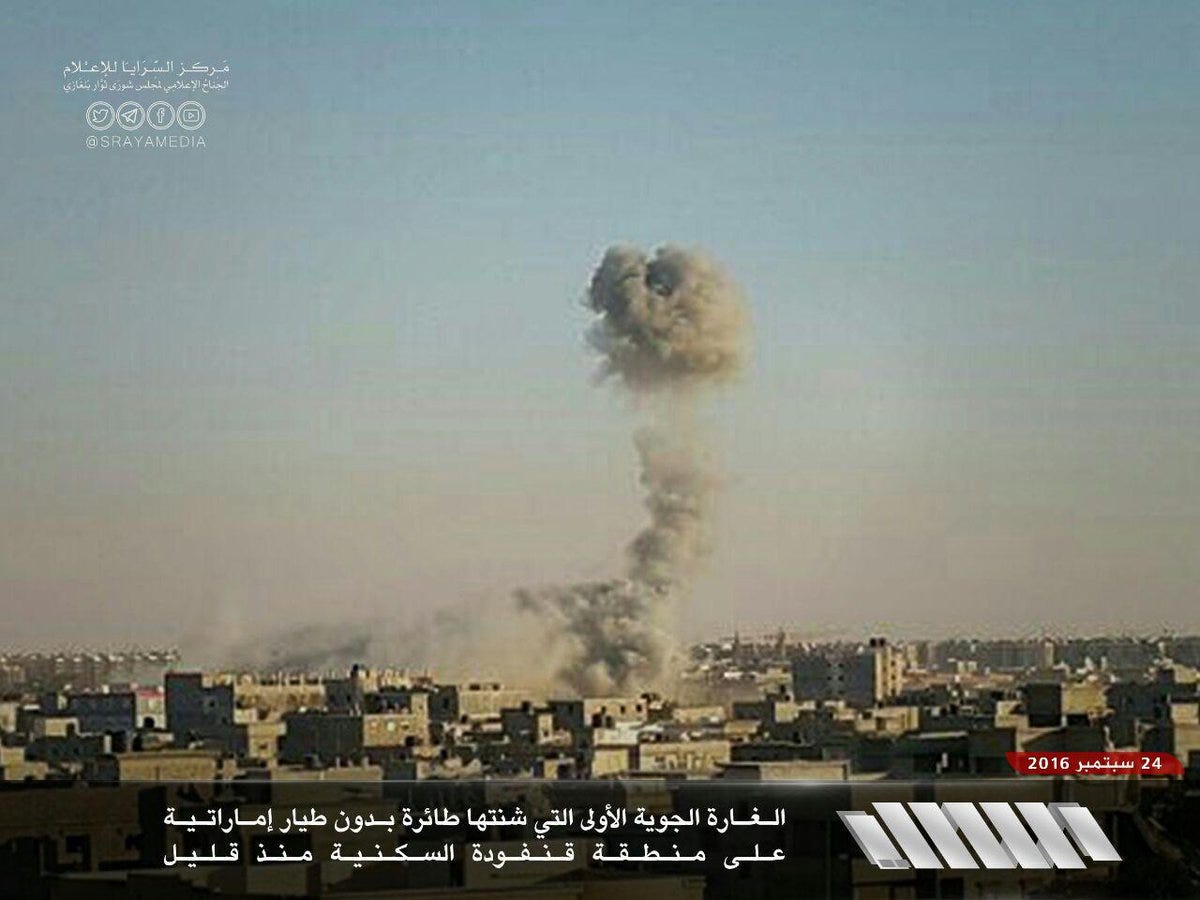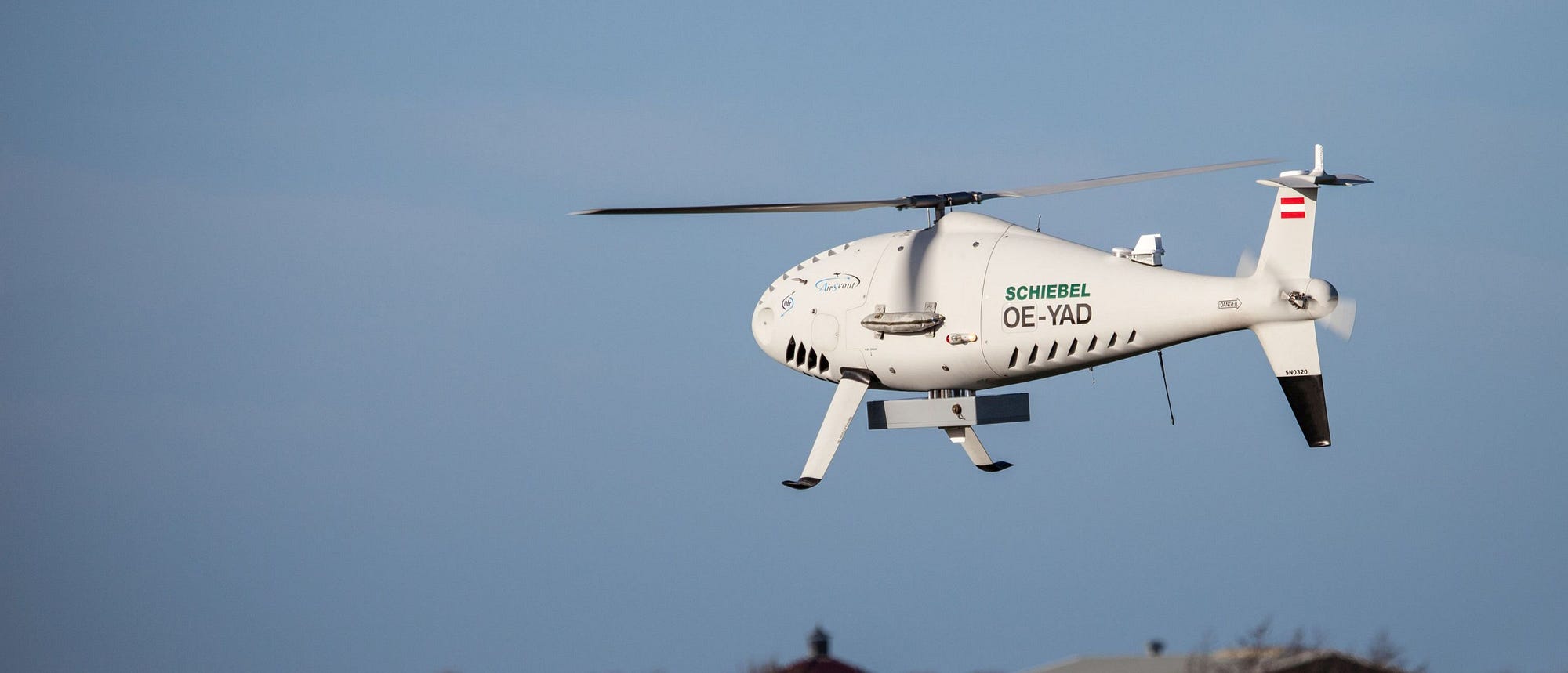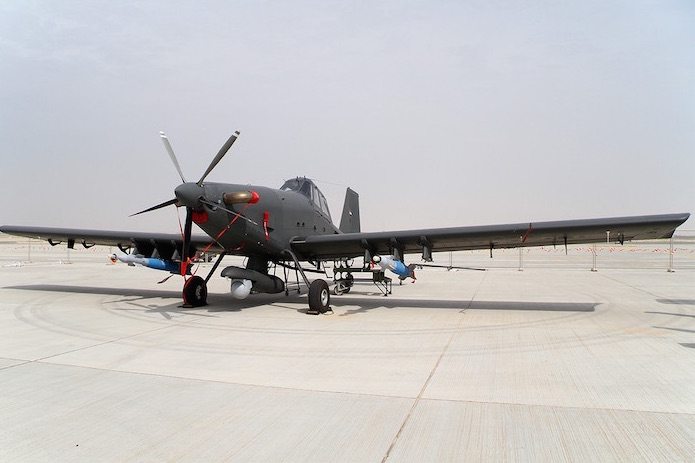Evidence piling up that Cairo and Abu Dhabi have deployed forces
by ARNAUD DELALANDE
On Sept. 25, 2016, the Benghazi Revolutionaries Shura Council, or BRSC — a group with ties to Al Qaeda — published photos of air strikes that hit the Ganfouda area of Benghazi in eastern Libya. The group’s Sraya media armclaimed that a drone belonging to the United Arab Emirates was responsible for the bombings.
And a week earlier in mid-September 2016, fighters from Ibrahim Jodran’s so-called Petroleum Facilities Guard claimed that either Egypt or the UAE bombed them near the town of Ras Lanuf, killing five fighters involved in a counterattack on Libyan National Army positions.
The reports are just the latest in a growing body of evidence that Egypt and the UAE are directly intervening in the Libya conflict.

There are two main regimes competing for international recognition in Libya — the Tripoli-based Government of National Accord and its rival Gen. Khalifa Haftar, the head of the new Libyan National Army, along with his allies in Tobruk.
While the United Nations and the United States have backed the GNA, Egypt and other regional powers including the UAE have strongly supported Haftar and his Tobruk government. But until recently it appeared that Haftar’s backers mostly supported him only indirectly — with weapons, supplies andtraining for his troops.
Now it seems increasingly likely that Haftar’s boosters are directly involved in the fighting in a sustained way.
The current conflict in Libya began in July 2014, when Islamic militants moved to capture the international airport in Tripoli. On Aug. 17 of that year, two unidentified aircraft bombed a camp and an ammunition store belonging to the militant Misrata Hattin Brigade in Tripoli.
The New York Times reported a week later that Egypt and the UAE had secretly launched two bombing raids targeting Islamist militias fighting for the control of the Libyan capital. Both countries denied any direct involvement in the battle.

It’s possible that former-Egyptian MiG-21MFs — gifted by Cairo to Haftar’s Libyan National Army Air Force — were involved in those initial raids.
On Oct. 15, 2014, air raids struck the militant groups Ansar Al Sharia and February 17 Martyrs Brigade in Benghazi. Haftar’s forces claimed that theycarried out these attacks, but other reports seemed to implicate Egypt.
For sure, on Feb. 16, 2015, six Egyptian air force F-16s carried out air strikesagainst training centers and ammunition stores belonging to the Islamic State in Derna. The raids were retaliation for ISIS’s killing of 21 Egyptian Coptic Christians migrant workers that the militant group kidnapped in the city of Sirte in December 2014 and January 2015.
On Feb. 7, 2016, unidentified aircraft attacked the city of Derna — specifically, the Bab Tobruk district and an area controlled by the militant Derna Mujahideen Shura Council. Four civilians and two fighters reportedly died. According to some Libyan sources, the air strikes hit an arms store in a residential area, resulting in huge explosions.
Col. Hamza Muftah of the LNA denied his forces were involved, which had the effect of shifting suspicion to the Egyptian and UAE air forces. Soon thereafter, someone bombed a convoy of 15 vehicles in the Shimikh Valley near Bani Walid. The LNA again denied any involvement.

Drone backers
In 2015, the UAE donated two of its Schiebel S-100 Camcopter drones to the LNA/AF. One of them was spotted flying over Benghazi on May 17, 2016, suggesting that either some Libyan operators had been trained to control the drones … or Emirati operators were on the ground at the LNA’s Benina air base, helping Haftar’s troops.
To be fair, the GNA’s Libya Dawn Air Force also has two Camcopters that it received in 2014. One of them was shot down — by LNA troops! — on Jan. 15, 2015 near Al Watiya air base. The remaining drone was seen flying over Sirte on June 23, 2016.
The Schiebel S-100 Camcopter is an Austrian-made unmanned helicopter. It boasts a flying range of 200 kilometers, which isn’t far enough to reach Benghazi from Misrata, where the Libya Dawn Air Force is based. That would seem to confirm that the Camcopter seen over Benghazi did notbelong to the GNA. It must have been Haftar’s Emirati drone.
In June 2015, the UAE also deployed at least one IOMAX AT-802U light striker — serial number 2287 — to an unidentified Libyan air base, albeit with its national markings hidden. The Emirati air force received 24 of the type, of which six have been donated to Jordan and at least three to Yemen.
Twelve AT-802s were flying combat sorties under the Saudi-led coalition in Yemen as of April 2016. That leaves three Emirati AT-802s, two of which are probably still in Libya. On Sept. 13, 2016, Middle East Eye released air traffic recordings of a supposed conversation between a pilot with an Emirati accent and a Libyan officer in the operations room at Benina air base.
The IOMAX AT-802U Air Tractor is an intelligence, surveillance and reconnaissance and light-attack turboprop aircraft built by the American company Air Tractor, Incorporated. It can be loaded with two GAU-19/A .50-caliber, three-barrel Gatling guns, up to 38 DAGR laser-guided rockets, as many as eight AGM-114 Hellfire missiles and various U.S.-made bombs.
On June 4, 2016, photos circulated apparently depicting what the BRSC claimed were U.S.-made bombs dropped by Emirati aircraft in Benghazi. In fact, the bomb in the photo is a Turkish-made, U.S.-designed Mk. 82 with a laser-guidance kit.
All the same, this may be the first hard evidence that the Emirati Air Tractors have dropped bombs in Libya. On Sept. 26, 2016, BRSC media published an infographic on types of aircraft the group claimed were involved in air strikes in Benghazi in recent months.
According to the infographic, the AT-802Us flew 27 bombing missions, while the S-100 Camcopters performed 235 reconnaissance flights.

